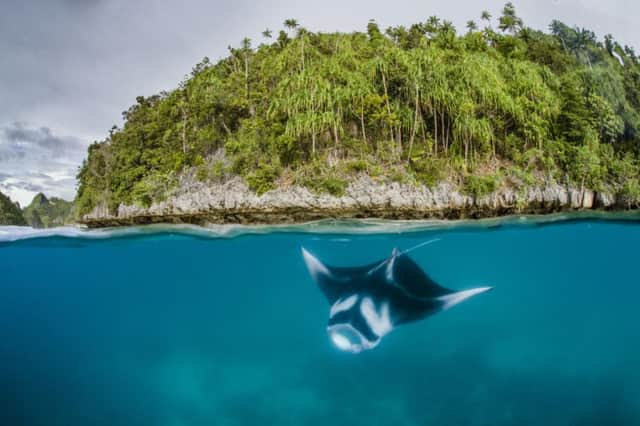Indonesian manta rays to get protected status


The government yesterday announced that the 17,000 manta rays within the archipelago’s 5.8 million square kilometres (2.2 million square miles) of ocean will be protected from fishing and export.
It will take time and co-operation at many levels to enforce the ban on poaching in the world’s biggest shark and ray fishery. Conservationists point to simple economics as an incentive.
Advertisement
Hide AdAdvertisement
Hide AdAccording to a study published last year in the online journal PLoS One, a manta ray is worth up to $1 million (£600,000) over the course of its long lifetime, thanks to tourists willing to pay generously for a chance to swim with the curious creatures that glide gracefully through the water by flapping their wide wings, as if flying.
They are worth $40 to $500 dead.
Government officials were “so surprised that the tourism value is very high. That’s a very powerful argument,” said Tiene Gunawan, marine programme director at Conservation International Indonesia.
“Indonesia is such a big country. When looking at the size of the water, it’s huge. And I think we should start small and make some kind of pilot for this enforcement.”
The regulation was passed on 27 January. Conservation groups are working to teach fishermen about the value of keeping the mantas alive, while business people, the military, water police and local officials are being engaged to assist.
More than 200 special policemen have been prepared to guard conservation areas and to enforce the law on protection. The government will also encourage fishermen affected by the ban to take advantage of manta ray tourism.
In some areas, including a well-known spot near the resort island of Bali, locals are seeing profits from taking snorkelers out on their boats, or working at larger dive resorts where mantas are a top attraction.
In Indonesia alone, manta tourism brings in an estimated $15m each year, according to the PLoS One report.
“Indonesia now has the second-largest manta ray tourism industry in the world,” Agus Dermawan, director of the country’s Marine Conservation Directorate, said. “Given the huge area of reefs and islands in our country, if managed properly, Indonesia could become the top manta tourism destination on the planet.”
Advertisement
Hide AdAdvertisement
Hide AdTwo types of rays exist in Indonesia, the manta and the mobula. Both are killed for their plankton-filtering gills, which are used for medicinal concoctions, mainly in China.
Multibillionaire Virgin Group boss Sir Richard Branson has sounded alarms though the Manta Ray of Hope conservation project. Last year, the Convention on International Trade in Endangered Species of Wild Fauna and Flora imposed new trade regulations for the species.
Mantas can reach up to eight metres (26 feet) from wingtip to wingtip.
Found in the tropics, they can live up to 50 years, but do not mature until age eight to ten and typically give birth to a single pup only every two to five years. This slow reproduction means fishing cannot be sustained over the long haul, and mantas are classified as vulnerable to extinction on the International Union for Conservation of Nature’s Red List of Threatened Species.